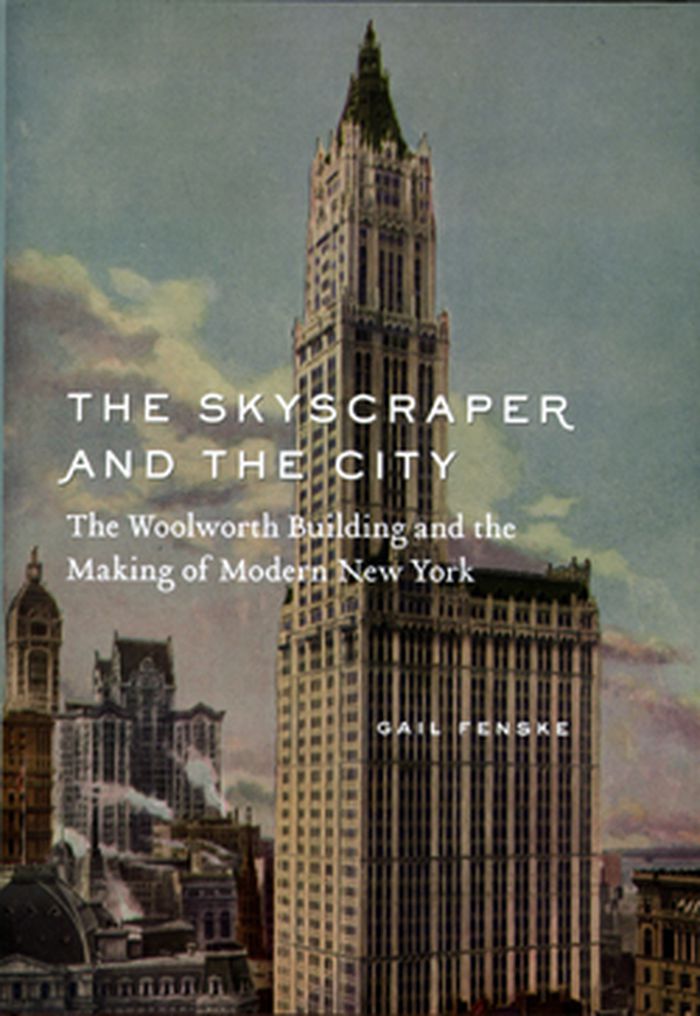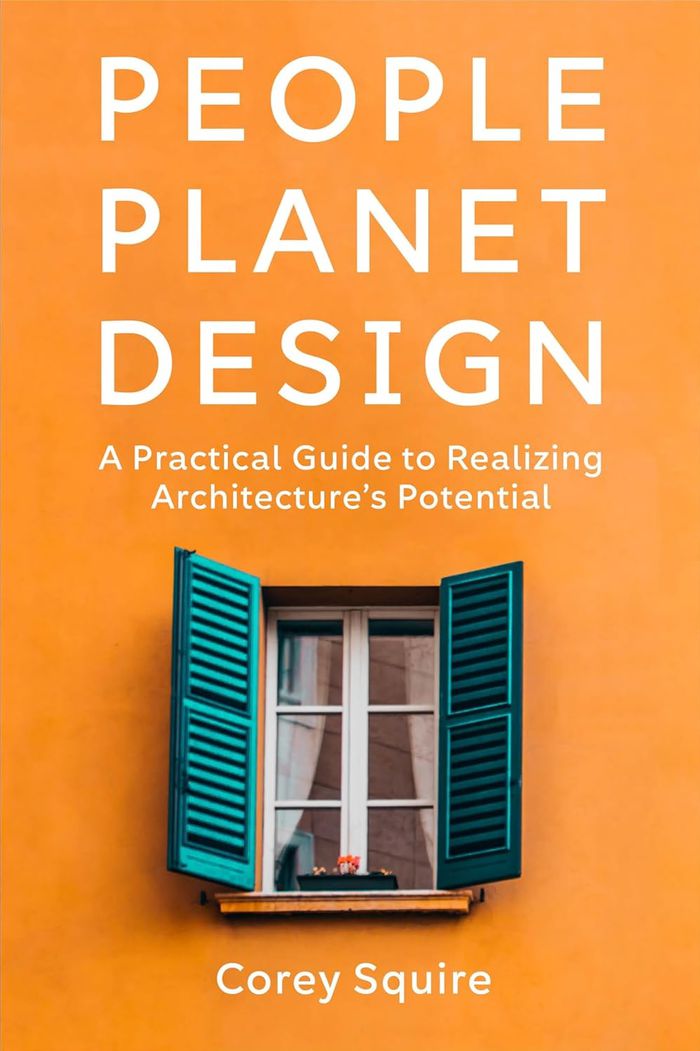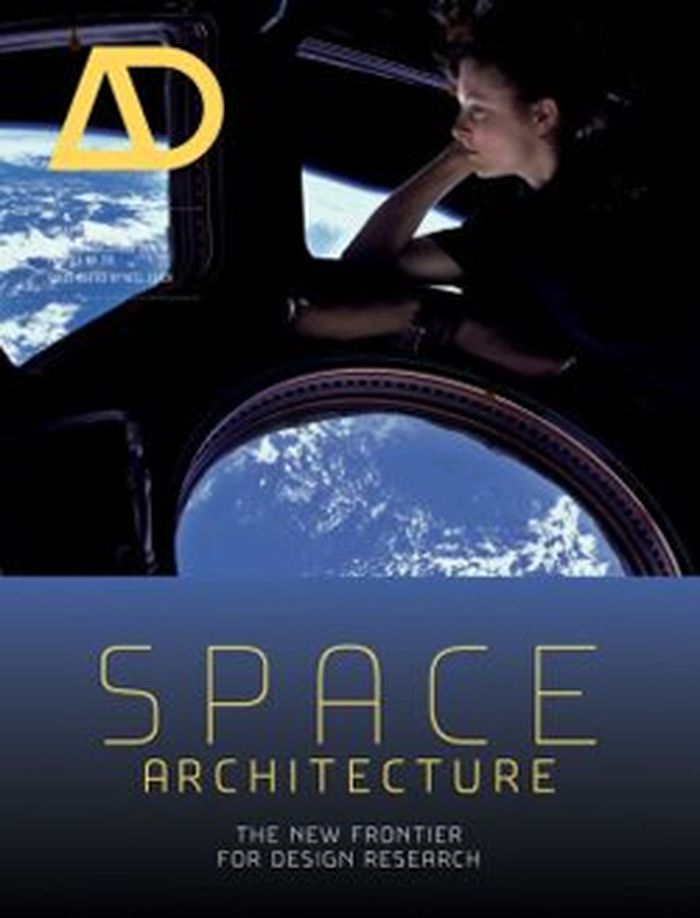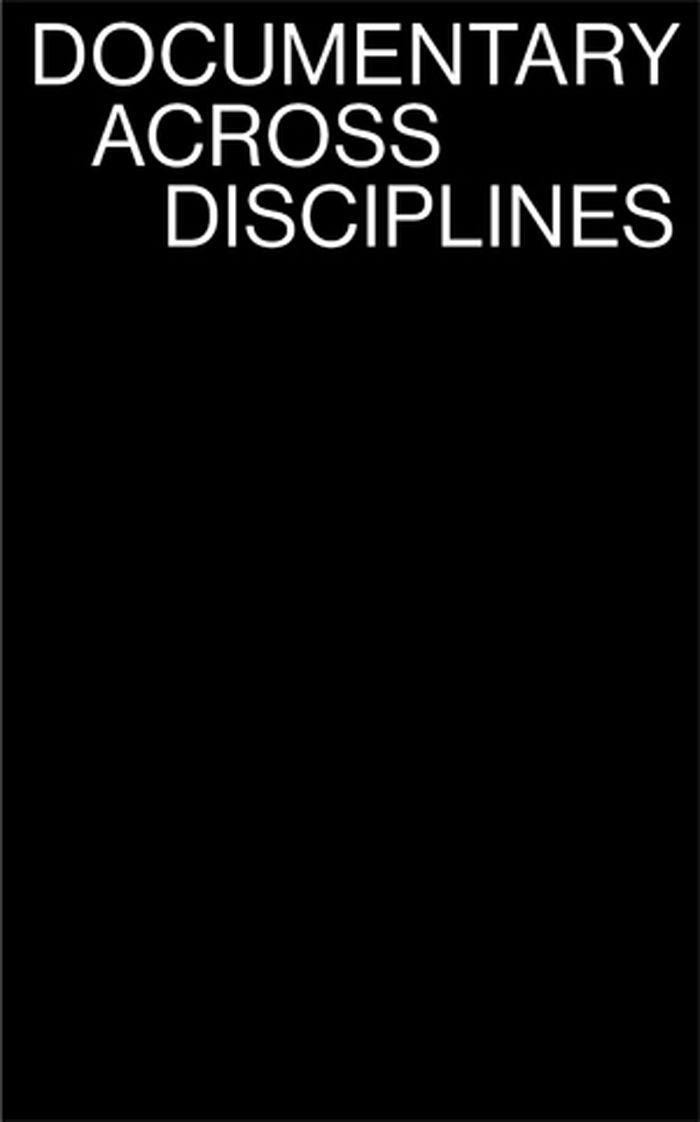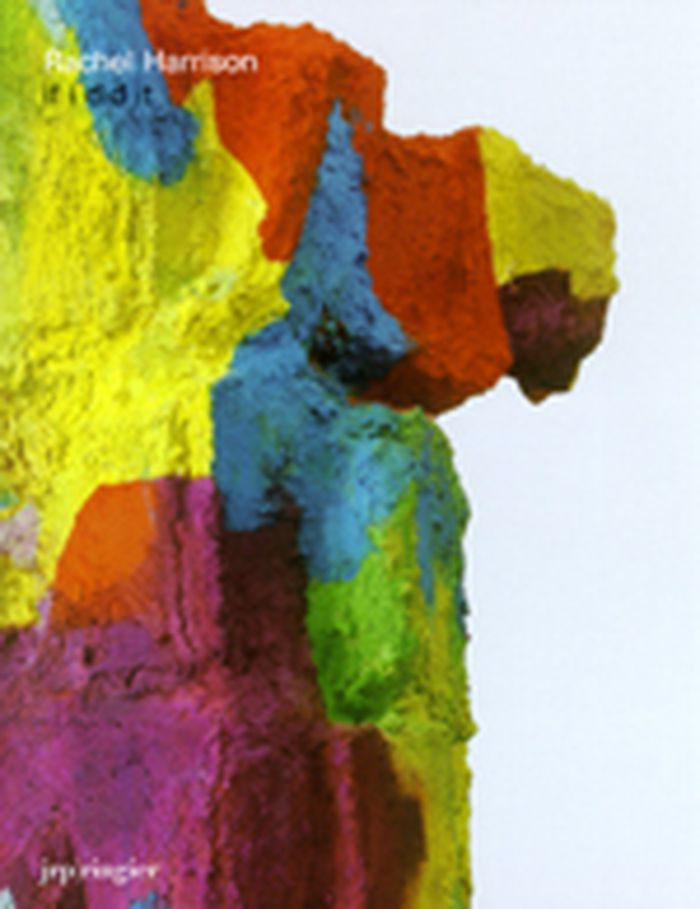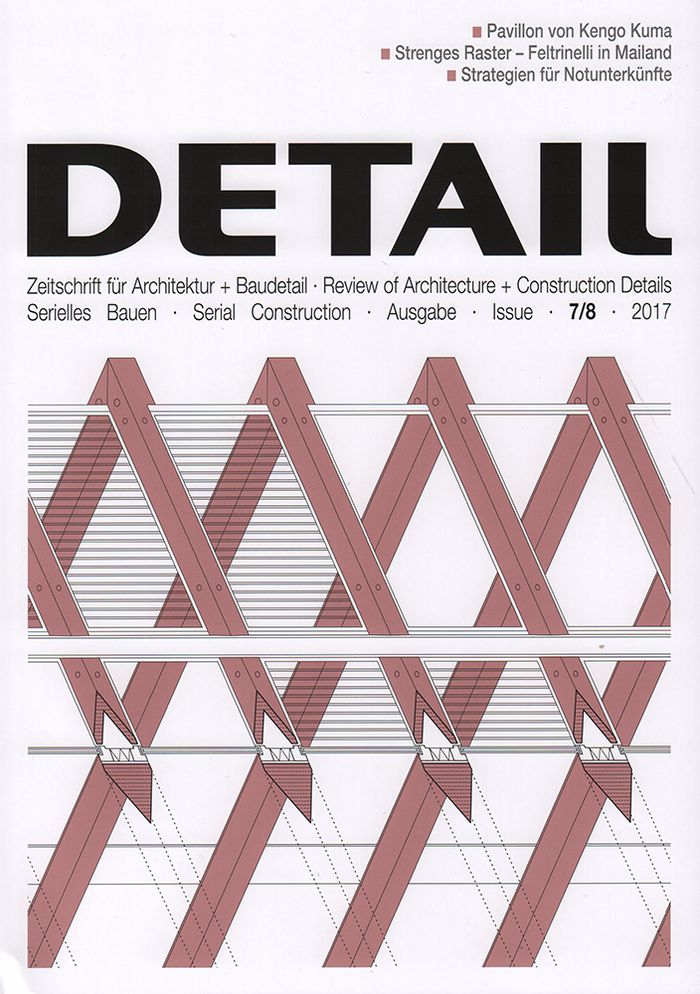$74.00
(available to order)
Summary:
Once the world’s tallest skyscraper, the Woolworth Building is noted for its striking but incongruous synthesis of Beaux-Arts architecture, fanciful Gothic ornamentation, and audacious steel-framed engineering. Here, in the first history of this great urban landmark, Gail Fenske argues that its design serves as a compelling lens through which to view the distinctive urban(...)
The skyscraper and the city: the woolworth building and the making of modern New York
Actions:
Price:
$74.00
(available to order)
Summary:
Once the world’s tallest skyscraper, the Woolworth Building is noted for its striking but incongruous synthesis of Beaux-Arts architecture, fanciful Gothic ornamentation, and audacious steel-framed engineering. Here, in the first history of this great urban landmark, Gail Fenske argues that its design serves as a compelling lens through which to view the distinctive urban culture of Progressive-era New York. Fenske shows here that the building’s multiplicity of meanings reflected the cultural contradictions that defined New York City’s modernity. For Frank Woolworth—founder of the famous five-and-dime store chain—the building served as a towering trademark, for advocates of the City Beautiful movement it suggested a majestic hotel de ville, for technological enthusiasts it represented the boldest of experiments in vertical construction, and for tenants it provided an evocative setting for high-style consumption. Tourists, meanwhile, experienced a spectacular sightseeing destination and avant-garde artists discovered a twentieth-century future. In emphasizing this faceted significance, Fenske illuminates the process of conceiving, financing, and constructing skyscrapers as well as the mass phenomena of consumerism, marketing, news media, and urban spectatorship that surround them. As the representative example of the skyscraper as a “cathedral of commerce,” the Woolworth Building remains a commanding presence in the skyline of lower Manhattan, and the generously illustrated Skyscraper and the City is a worthy testament to its importance in American culture.
Gratte-ciels
$49.95
(available in store)
Summary:
If you were asked to close your eyes and envision where you are happiest, would you picture somewhere inside a building? North Americans are inside buildings for more than 90% of the day. Meanwhile, the indoors are stifling us, sometimes even killing us. Buildings, and the materials that make them up, expose us to materials linked to negative health impacts. The(...)
People, planet, design: A practical guide to realizing architecture's potential
Actions:
Price:
$49.95
(available in store)
Summary:
If you were asked to close your eyes and envision where you are happiest, would you picture somewhere inside a building? North Americans are inside buildings for more than 90% of the day. Meanwhile, the indoors are stifling us, sometimes even killing us. Buildings, and the materials that make them up, expose us to materials linked to negative health impacts. The construction and operation of buildings is responsible for 40% of climate-changing carbon emissions. In the US, the design choices made by the typical architecture firm employee each year can reduce emissions by about 300 times that of an average American. But the promise of sustainable architecture will not be realized if sustainability remains a secondary consideration for architects. What if great design were defined by its ability to cool the planet, heal communities, enhance ecological functioning, and advance justice? In "People, planet, design," architect Corey Squire builds the case, provides the data, and lays out the practical tools for a transformative human-centered architecture. This approach integrates beauty and delight with an awareness of how every design choice impacts the community, the planet, and the people who will use the building. Outcome-focused with a deep dive into practical design strategies, the book showcases ten building systems that embody design excellence.
Green Architecture
$43.95
(available to order)
Summary:
The new issue is in store ! Forty years on from the first moon landing, architecture in Space is entering a new era. Over the last decade, there has been a fundamental shift in the Space industry from short-term pioneering expeditions to long-term planning for colonisation, and new ventures such as Space tourism. Architects are now involved in designing the interiors of(...)
AD Space architecture: the new frontier for design research
Actions:
Price:
$43.95
(available to order)
Summary:
The new issue is in store ! Forty years on from the first moon landing, architecture in Space is entering a new era. Over the last decade, there has been a fundamental shift in the Space industry from short-term pioneering expeditions to long-term planning for colonisation, and new ventures such as Space tourism. Architects are now involved in designing the interiors of long-term habitable structures in Space, such as the International Space Station, researching advanced robotic fabrication technologies for building structures on the Moon and Mars, envisioning new 'space yachts' for the super-rich, and building new facilities, such as the Virgin Galactic 'Spaceport America' in New Mexico designed by Foster + Partners. Meanwhile the mystique of Space remains as alluring as ever, as high-profile designers and educators -- such as Greg Lynn -- are running designs studios drawing upon ever more inventive computational design techniques. This issue of AD features the most significant current projects underway and highlights key areas of research in Space, such as energy, materials, manufacture and robotics. It also looks at how this research and investment in new technologies might transfer to terrestrial design and construction. Contributors include: Anders Carlson, Anita Genupta, Behrokh Khoshnevis. Space architects: Constance Adams, Marc Cohen, Ondrej Doule, Scott Howe, Brent Sherwood, John Spencer, Madhu Thangavelu, Andreas Vogler. Architects: Bevk Perovic Arhitekti, Dekleva Gregoric Arhitekti, Foster + Partners, Neil Leach, Greg Lynn, OFIS architects, SADAR + VUGA.
Magazines
$33.95
(available to order)
Summary:
Contemporary engagements with documentary are multifaceted and complex, reaching across disciplines to explore the intersections of politics and aesthetics, representation and reality, truth and illusion. Discarding the old notions of “fly on the wall” immediacy or quasi-scientific aspirations to objectivity, critics now understand documentary not as the neutral picturing(...)
Documentary Across Disciplines
Actions:
Price:
$33.95
(available to order)
Summary:
Contemporary engagements with documentary are multifaceted and complex, reaching across disciplines to explore the intersections of politics and aesthetics, representation and reality, truth and illusion. Discarding the old notions of “fly on the wall” immediacy or quasi-scientific aspirations to objectivity, critics now understand documentary not as the neutral picturing of reality but as a way of coming to terms with reality through images and narrative. This book collects writings by artists, filmmakers, art historians, poets, literary critics, anthropologists, theorists, and others, to investigate one of the most vital areas of cultural practice: documentary. Their investigations take many forms—essays, personal memoirs, interviews, poetry. Contemporary art turned away from the medium and toward the world, using photography and the moving image to take up global perspectives. Documentary filmmakers, meanwhile, began to work in the gallery context. The contributors consider the hybridization of art and film, and the “documentary turn” of contemporary art. They discuss digital technology and the “crisis of faith” caused by manipulation and generation of images, and the fading of the progressive social mandate that has historically characterized documentary. They consider invisible data and visible evidence; problems of archiving; and surveillance and biometric control, forms of documentation that call for “informatic opacity” as a means of evasion.
Rachel Harrison If I did it
$56.00
(available to order)
Summary:
Gracing the cover jacket of Rachel Harrison's highly anticipated second monograph is an informal monument to the man who holds the Americas' namesake. The only hint to this memorial for the 15th century Italian explorer, Amerigo Vespucci, is an apple resting on an outcropping of neon-green cement; of course the fact that the apple is not only artificial but has a bite(...)
Contemporary Art Monographs
March 2008, Zurich
Rachel Harrison If I did it
Actions:
Price:
$56.00
(available to order)
Summary:
Gracing the cover jacket of Rachel Harrison's highly anticipated second monograph is an informal monument to the man who holds the Americas' namesake. The only hint to this memorial for the 15th century Italian explorer, Amerigo Vespucci, is an apple resting on an outcropping of neon-green cement; of course the fact that the apple is not only artificial but has a bite taken out of it suggests otherwise to the discovery of these "Edenic" continents. This slight yet important fact raises the basic concept of if i did it: the active disavowal of art's political function as a museological testament to the "progress" of social history. By tossing off this monumental propensity, Harrison builds "antimonuments;" not so much sculptures but lumpen aggregates of pop psychology. In addition to Vespucci, throughout the book, one finds that celebrities Johnny Depp and Tiger Woods are included in a pantheon with John Locke and 18th century Corsican revolutionary Pasquale Paoli, meanwhile Al Gore checks the temperature, Claude Levi-Strauss checks the door with a taxidermied hen and rooster and a bi-curious Alexander the Great is the master of ceremonies. The title, taken from O.J. Simpson's infamous "hypothetical" account of his murder of Nicole Brown Simpson and Donald Goldman, groups this role call of high- and low- brow idols into a nonhierarchical tableau where cultural and political value are allotted only where one sees fit.
Contemporary Art Monographs
Detail 7/8 2017
$32.95
(available to order)
Summary:
The laws of the series. In the 1920s, a group of architects in Milan came together to form a movement that would later be known as Razionalismo. Architecture, they were convinced, must adhere to the rules of reason. They propagated the notion of “pure rhythm”, which was reflected in the repetition of individual elements as a fundamental design principle. Today, the(...)
Detail 7/8 2017
Actions:
Price:
$32.95
(available to order)
Summary:
The laws of the series. In the 1920s, a group of architects in Milan came together to form a movement that would later be known as Razionalismo. Architecture, they were convinced, must adhere to the rules of reason. They propagated the notion of “pure rhythm”, which was reflected in the repetition of individual elements as a fundamental design principle. Today, the relevance of serial production methods in architecture reach far beyond their significance at the time of Razionalismo. Repetitive structures can not only be found characterising the aesthetic appearance of buildings, they often play a decisive role in complex planning and construction processes, such as in the combination of individual modules or other industrially prefabricated elements. In our July/August issue, we present contemporary buildings that embrace the notion of the series in a variety of ways. For our Documentation section, Burkhard Franke explores examples in which aspects of repetition is used both as a design element and with respect to construction methodologies. A new social housing project by Florian Nagler in Munich, for instance, is a hybrid construction made with prefabricated wood elements. Meanwhile, a student housing complex in Berlin that Holzer Kobler Architekturen built using shipping containers resist any sense of monotony despite their stacked arrangement. For the exemplary French social housing buildings by Poggi & More near Bordeaux and by PPA architectures in Toulouse, modular components likewise contributed to the reduction of construction costs. Are buildings produced according to serial fabrication methods invariably cost effective? In our Technology feature, Frank Kaltenbach has compiled an overview of recent solutions in refugee housing. The majority of them needed to be built within a short time period and under high budgetary constraints. The ways in which serial production methods seem to be predestined for such demanding projects can be discovered in this issue.
Magazines
